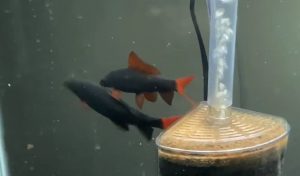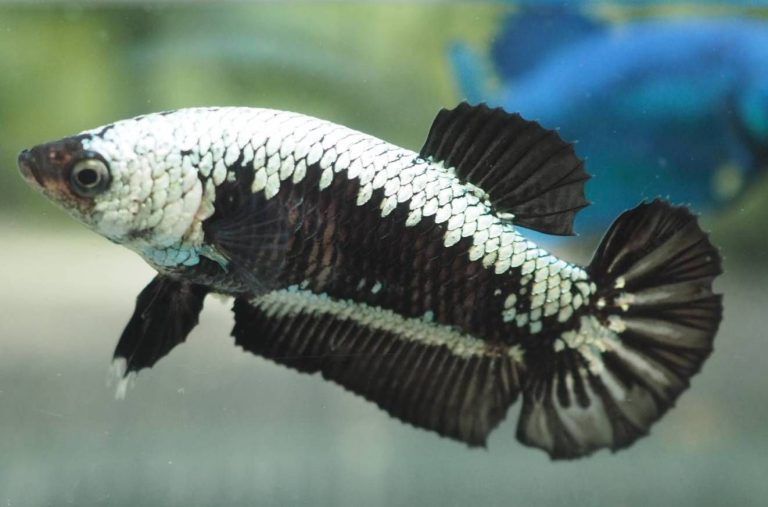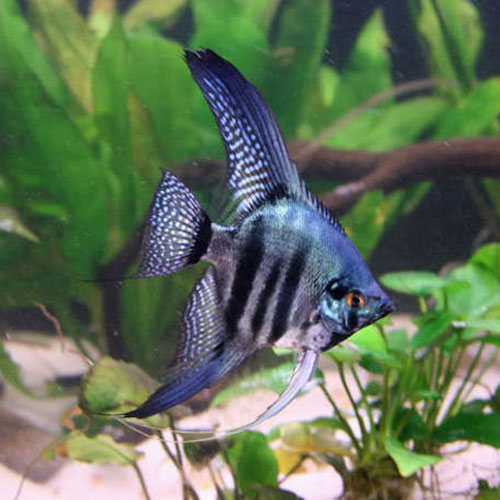Pregnant Rainbow Shark
If you’re interested in the world of aquariums and have a rainbow shark in your tank, you might be wondering about the possibility of your shark becoming pregnant. Rainbow sharks are fascinating creatures and learning about their reproductive process can provide valuable insights into their behavior and care. In this article, we will delve into the topic of pregnant rainbow sharks, exploring their reproductive habits, signs of pregnancy, care during pregnancy, and much more. So, let’s dive in and discover the wonders of a pregnant rainbow shark!
Reproductive Habits of Rainbow Sharks
Rainbow sharks, also known as red-fin sharks or ruby sharks, are tropical freshwater fish native to Southeast Asia. These vibrant fish are not actual sharks but belong to the Cyprinidae family. Despite their name, rainbow sharks have a unique reproductive process that differs from sharks.
Rainbow sharks are egg-laying fish, meaning that they do not give live birth like some other aquarium fish species. They follow a reproductive pattern similar to most other egg-laying fish where the female lays eggs, and the male fertilizes them externally.
Fertilization Process
During the mating process, the male rainbow shark will chase the female and nudge her side with his snout or bump into her. This behavior is a sexual display to entice the female into releasing eggs. Once the female releases her eggs, the male fertilizes them by releasing sperm. This fertilization process typically takes place near a plant or other tank structure where the eggs can attach and develop.

Egg Development and Hatching
After fertilization, the eggs will attach themselves to a surface for incubation. Rainbow shark eggs are adhesive, meaning they have a sticky outer coating that allows them to stick to surfaces such as plants or decorations. The eggs will undergo a period of development and will hatch within a few days, depending on water temperature and other environmental factors.
Pregnancy Duration
Now that we understand the reproductive process of rainbow sharks, it’s important to note that they do not actually go through a traditional pregnancy like mammals. Instead, the female carries and protects the eggs until they hatch. The duration between fertilization and hatching can vary but is generally around 2-7 days. During this time, the female will exhibit certain signs and behaviors indicating that she is carrying eggs.
Signs of a Pregnant Rainbow Shark
While rainbow sharks don’t have a pregnancy in the same sense as mammals, there are still some visible signs and behaviors that can indicate a female is carrying eggs. These signs can serve as an exciting indication that your rainbow shark is reproducing successfully. Look out for the following signs:
Increased Abdominal Size
One of the most noticeable signs of a pregnant rainbow shark is an increased abdominal size. The female’s belly will appear rounder and more pronounced compared to her usual slender figure. This is because the eggs are developing and growing inside her. Keep in mind that the extent of abdominal swelling can vary from fish to fish, so it’s important to observe changes relative to your specific rainbow shark.
Changes in Coloration
Pregnant female rainbow sharks may also exhibit changes in coloration. They may appear darker or more vibrant in color compared to their male counterparts. This change in coloration is believed to be an instinctual way to attract mates during the reproductive period.
Behavioral Changes
Just like any expectant mother, pregnant rainbow sharks may display changes in behavior. They might become more territorial or defensive, guarding their nesting site or perceived threats to their unborn offspring. This behavior is a protective instinct that ensures the safety of the developing eggs.
Caring for a Pregnant Rainbow Shark
Providing proper care for a pregnant rainbow shark is crucial to ensure the health and well-being of both the mother and her eggs. Here are some essential care guidelines to follow during this period:
Providing Adequate Space
It’s important to make sure that your pregnant rainbow shark has enough space in the aquarium to swim freely. Rainbow sharks are naturally active and territorial fish, so giving them sufficient room to move around will help reduce stress and maintain good overall health.
Maintaining Water Quality
Maintaining optimal water quality is vital during the pregnancy period. Pregnant rainbow sharks are more susceptible to stress and disease, so keeping the water clean and properly balanced is essential. Regular water changes, proper filtration, and monitoring water parameters like temperature, pH, and ammonia levels are crucial for the well-being of both the mother and eggs.
Providing Hiding Places
Creating ample hiding places using plants, rocks, or decorations is crucial in supporting the natural instincts of a pregnant rainbow shark. Hiding places will offer security and privacy to the expectant mother, reducing stress and increasing her overall well-being. Additionally, the hiding spots also provide a surface for the eggs to attach to during the development period.
Feeding a Nutritious Diet
Proper nutrition is essential for the mother’s health and the healthy development of the eggs. During pregnancy, it is important to provide a balanced diet rich in high-quality fish food. Consider including a variety of foods such as flakes, pellets, and live or frozen options. Providing a diverse diet will ensure that your rainbow shark receives all the necessary nutrients for a successful pregnancy.
Frequently Asked Questions
1: Can two male rainbow sharks reproduce?
No, rainbow sharks require both a male and a female to reproduce. Only the female can carry eggs and ensure successful reproduction.
2: How many eggs can a pregnant rainbow shark lay?
The number of eggs a pregnant rainbow shark can lay can vary significantly. On average, a female rainbow shark can lay anywhere from 20 to 50 eggs in a single breeding cycle.
3: How long does it take for rainbow shark eggs to hatch?
The incubation period for rainbow shark eggs is typically around 2-7 days, depending on various factors such as water temperature, quality, and environmental conditions.
4: Will a pregnant rainbow shark eat its eggs?
While it is rare, some rainbow sharks may exhibit cannibalistic behavior and consume their own eggs. However, providing ample hiding spots and a stress-free environment can help minimize this risk.
Final Thoughts
Understanding the reproductive behavior and caring for a pregnant rainbow shark can be both fascinating and rewarding. By providing the right conditions and care, you can witness the incredible journey of new life unfolding in your aquarium. Remember to observe your rainbow shark closely, watch for signs of pregnancy, and continue to provide a nurturing environment to ensure a successful breeding experience. Happy fishkeeping!






